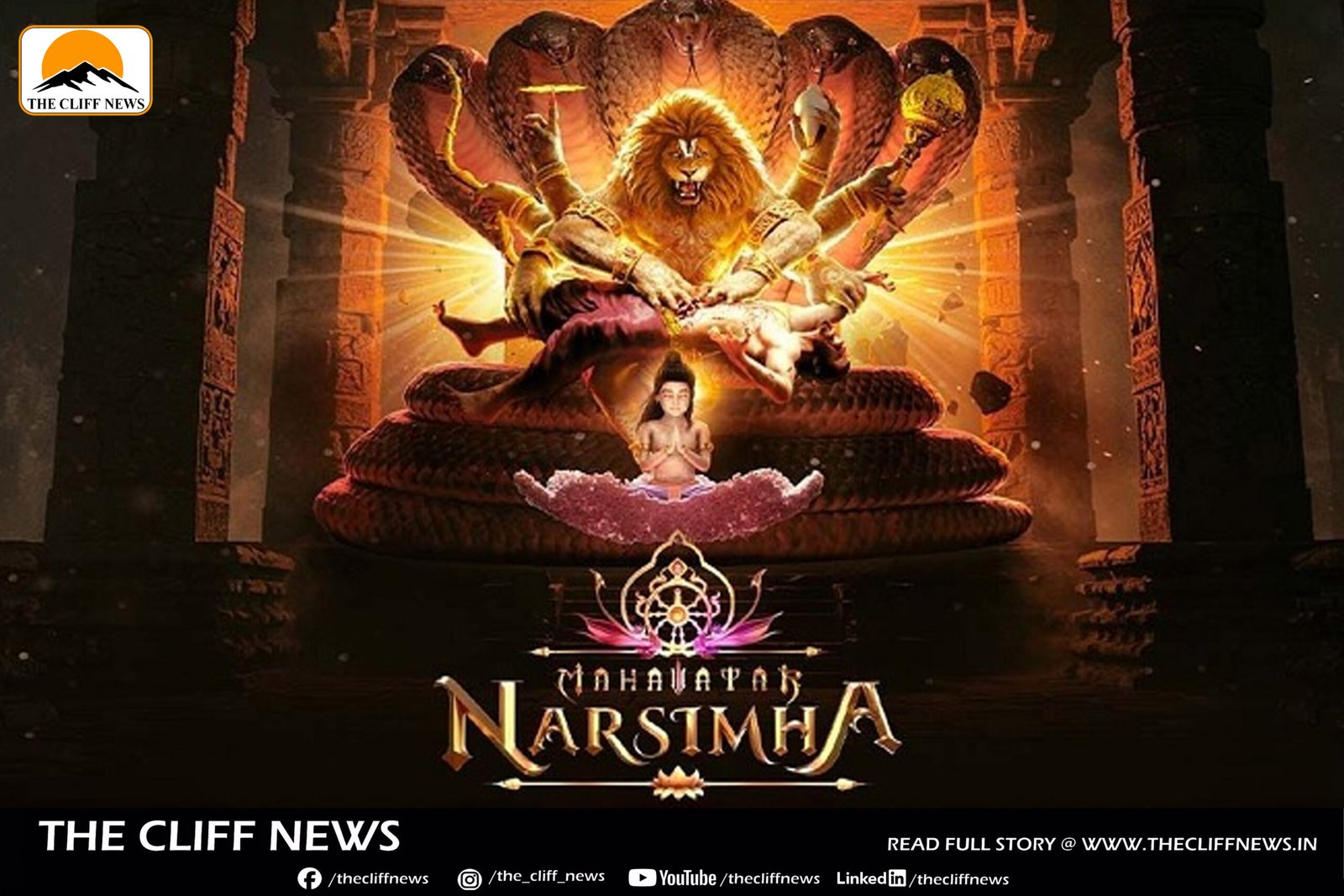Mahavatar Narsimha, the first installment in the Mahavatar series directed by Ashwin Kumar, marks a surprisingly powerful entry into Indian animated cinema. While the trailer offered only a glimpse of what was to come, the film itself far exceeds expectations, offering a sincere and emotional retelling of one of Indian mythology’s most powerful stories — the tale of Lord Narasimha, the half-man, half-lion avatar of Lord Vishnu.
The narrative follows the story of Hiranyakashipu, a demon king who declares himself a god and demands absolute devotion — even from his own son. But his son, Prahlad, remains steadfast in his devotion to Vishnu, setting the stage for divine intervention. It’s a story familiar to many, but the film succeeds in giving it renewed emotional depth, reflection, and meaning.
A Film That Grows With Its Story
Technically, the animation begins with modest production values. In the early scenes, the visuals feel restrained, especially in detailing. However, as the story progresses, the quality of animation improves dramatically — as though the film itself evolves with its characters. By the second half, the visual design reaches an impressive level of maturity, rendering some scenes powerful enough to give goosebumps.
One of the film’s few shortcomings lies in voice dubbing and lip sync. There are noticeable moments when the voiceovers don’t match facial expressions or mouth movements, occasionally disrupting the emotional flow. Yet, the filmmakers mitigate this through an unusual but effective cinematic tool in animation — silence. Strategic pauses amplify the emotional weight of pivotal moments, drawing viewers deeper into the narrative.
Voice Work, Music, and Script: A Strong Emotional Core
Despite occasional sync issues, the voice performances are commendable, lending weight and emotional authenticity to nearly every scene. The dialogues are well-crafted — respectful, introspective, and far removed from the over-the-top bravado seen in some recent mythological films. In contrast to lines like “Jalegi tere baap ki” from Adipurush, Mahavatar Narsimha maintains a calm, focused, and reverent tone throughout.
The music stands out as another highlight — beautifully composed, emotionally attuned, and never overpowering. It blends seamlessly with the film’s tone and enhances its devotional atmosphere.
Narasimha’s Arrival: A Moment of Awe
The confrontation between Narasimha and Hiranyakashipu is the film’s high point — executed with chilling intensity and deep spiritual symbolism. It transcends mere action or drama, instead addressing a fundamental question in bhakti:
“Where is God if we cannot see Him?”
The scene is terrifying yet awe-inspiring, handled with seriousness and artistic reverence.
A Rare Blend: Devotion and Depth for All Ages
Mahavatar Narsimha offers something for everyone. Children will be captivated by the vibrant visuals and mythological grandeur, while adults may find themselves contemplating its deeper spiritual and philosophical layers long after the credits roll. The pacing is steady and deliberate, never rushed, yet never dragging.
Final Verdict
While not without flaws, Mahavatar Narsimha emerges as a quietly confident, emotionally grounded, and spiritually rich cinematic experience. Its sincerity, heart, and message far outweigh its technical shortcomings. In a genre often underutilized in Indian cinema, this film stands as a meaningful step forward — a respectful and moving portrayal of one of Hinduism’s most profound tales.
Released in 3D and 2D formats in multiple Indian languages on July 25, 2025, the film is widely accessible — and highly recommended.



